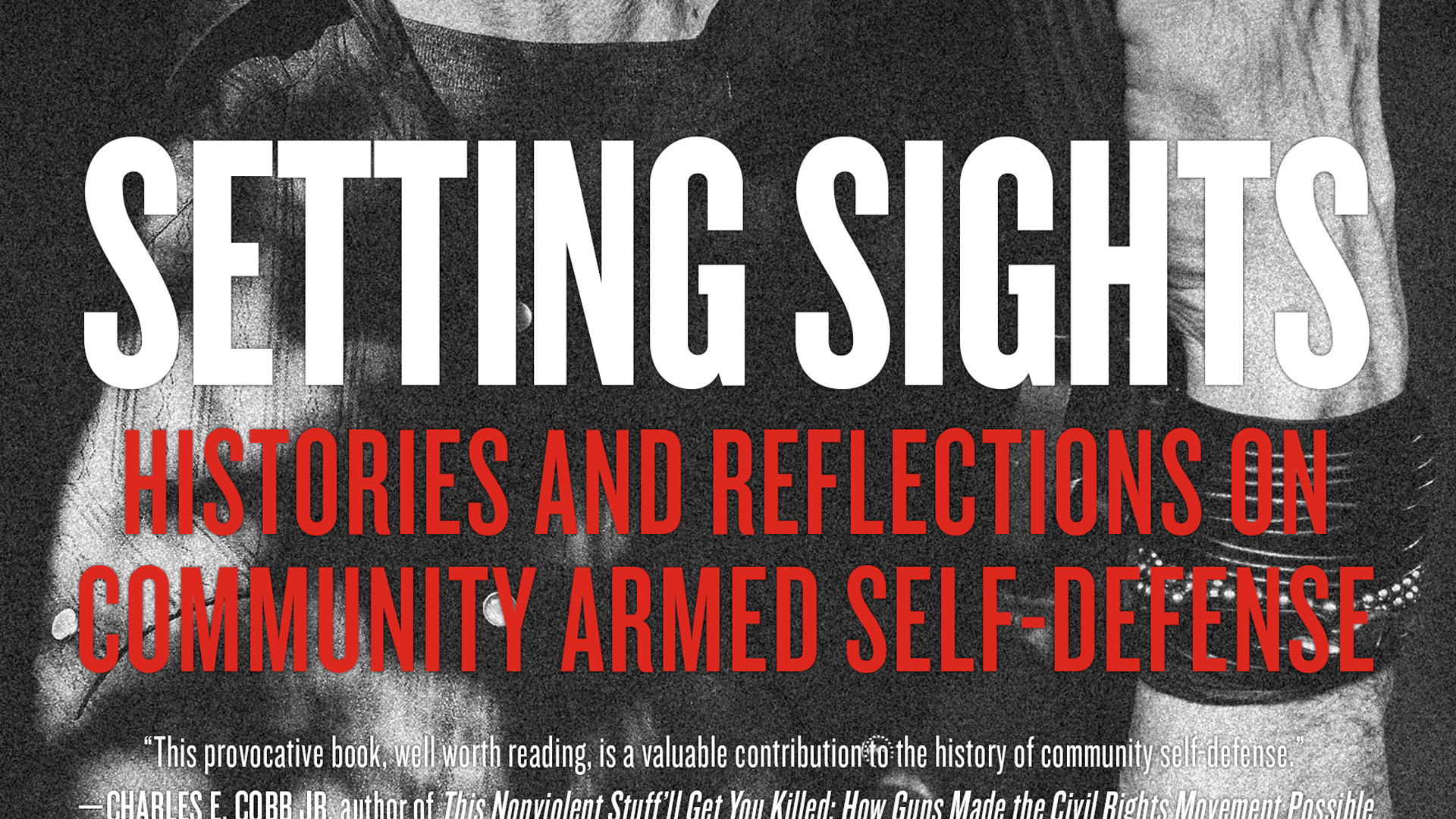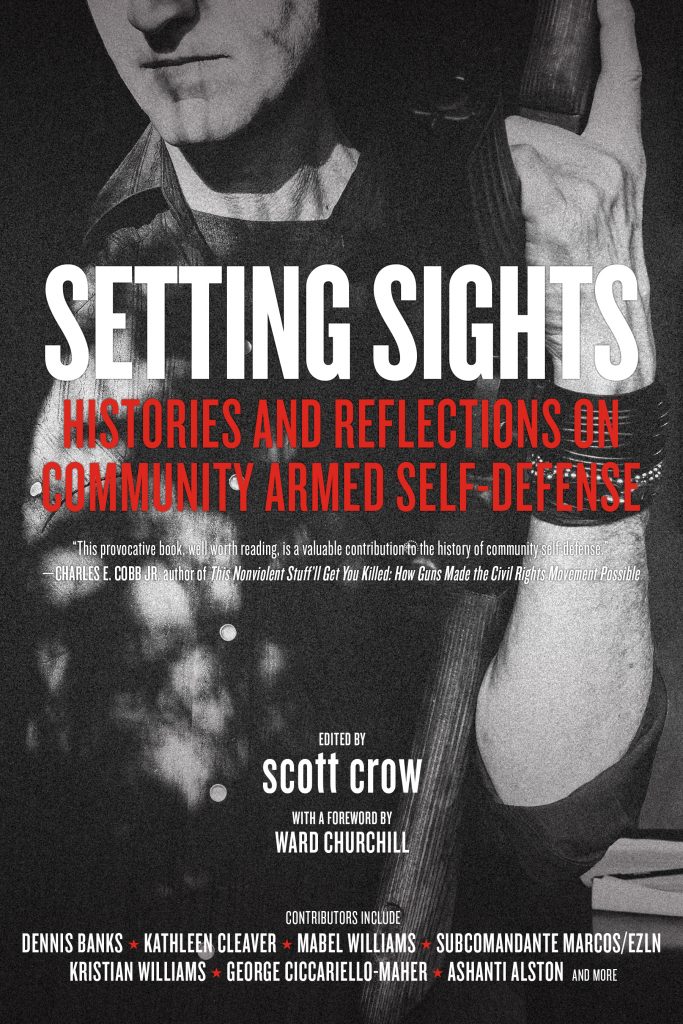By Hèctor
MRR
November 2018
The debate over gun control in the US seems to have faded out lately, but in reality, it keeps burning. The next tragic news will burst it up and the world will echo with it once again. The violence keeps seizing lives. For the most part, these deaths happen inside marginalized and oppressed communities. These people had no voice in life, and many take advantage of their absence to speak in their name. This is how pro- and anti-gun control discourses have silenced minorities, indigenous peoples, Afro-descendants, and their views.
Setting Sights confronts this debate with the ability to re-frame it in its own terms. Snatching the self-defense question out of state territory also means denouncing its monopoly of violence, the racial, class, and gender privileges of its advocates, and brilliantly in this case, encourages a communitarian egalitarian spirit.
Setting Sights is an
interesting book even for those people who live in other parts of the
world, in different social and cultural circumstances, far from this
debate. This is because it invites us to rethink the defense strategies
of our liberating projects and brings the creation and support of
communities into a central place: self-defense not as an individual
reaction but as a collective need. In this, guns may or may not play a
role; in fact we can redefine what we consider our weapons, but these
reflections open up a field to explore as they push us to consider how
we deal with the inevitable violence of law enforcement and reactionary
groups.
Any social movement that is able to formulate and carry out a
project of its own, opposed to the prevailing system, will soon be
forced to defend itself against the aggressions of power and its
vassals. The power may try other ways to co-opt the movement, but
ultimately, if integrating strategies fail, it will use violence. This
threat, which hangs over our heads, is put into relevance in Setting Sights.
The book is divided in two sections: the first includes a collection of theory and analytical essays on liberatory community armed self-defense while the second presents historical examples of the 20th and 21st centuries. Anti-fascist activist scott crow is the editor and also pens some of the most remarkable articles. His first article brings us an understanding of the concepts developed later, placing special emphasis on the importance of gender, race, and class issues to develop mechanisms to prevent weapons that reinforce hierarchies and power relations. Later, in the second section, he speaks about his personal experience in supporting the Algiers neighborhood community in New Orleans during attacks by racist militia and the police during the days after Hurricane Katrina.
Several voices enrich the debate on community armed self-defense: Angela Y. Davis, Ashanti Alston, Kathleen Cleaver, Ward Churchill, Paul Avrich, Subcomandante Marcos, Dennis Banks, Mabel Williams, Gabriel Kuhn, Akinyele Omowale Umoja, in addition to collective writings by anti-fascist and anti-racist organizations such as Black Lives Matter, Redneck Revolt, Wasp, or Copwatch. They speak to us from their experience and critical thinking.
Perhaps at first glance, after the enriching reading that is the theoretical section of the book, the historical section seems unnecessary and redundant. It takes up more space and falls more easily in an apology of taking arms in scenarios that go beyond self-defense. Even so, as the reader gets into it, the essays become relevant as a collection of important experiences for our history of struggle and resistance. It is a compendium of victories and failures in which the use of guns is a decisive tool in revolutionary processes, but never alone. It is always accompanied by the construction of communities organized in equality and freedom.
However, I can’t resist criticizing the chapter on women’s involvement in the Spanish Social Revolution. I think it is a mistake to reproduce here a text written by British anti-fascists (including typos in Hispanic names) since there were other groups from Spain that had much closer and accurate memories of these events. It is the article where the author shows the greatest distance from the narrated facts, while other chapters are written in first person or told from primary sources.
Nevertheless, it’s still a minor fault in a book that channels its potential in expropriating a debate monopolized by our enemies. In the USA, this is represented by two sides with the same racist, capitalist, and pro-governmental substrate. There and in the rest of the world, wherever there is State, the oppressed communities are deprived of their ability to defend themselves. This is an unsustainable situation for any emancipatory project. Setting Sights arms us with arguments but doesn’t intend to close the debate; now it’s our turn, we have our say and our conclusions must become our actions.







